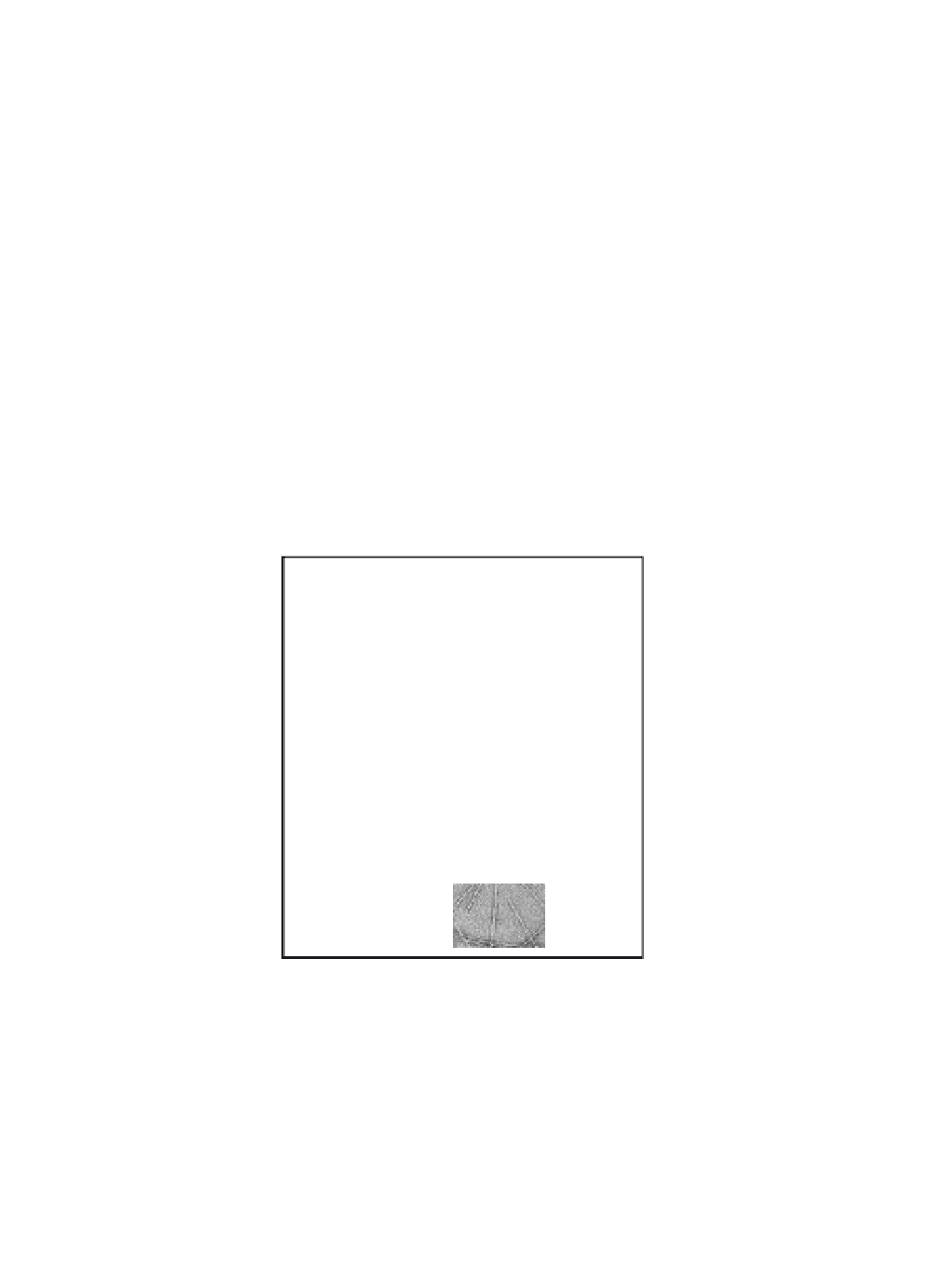Biology Reference
In-Depth Information
12
material in the eggshell.
We chose this peptide because the central
domains of the A class chorion proteins are highly conserved in both
sequence and length and because this conservation indicates that
this domain plays an important functional role in the formation of
chorion structure.
5,12
The cA peptide forms structurally uniform, amyloid-like fibrils
by self-assembly in an astonishing variety of solvents, pH values,
ionic strengths and temperatures (Iconomidou and Hamodrakas,
in preparation). The fibrils were judged to be amyloid-like from
their tinctorial and structural characteristics. They bind Congo red
showing the characteristic for amyloids red-green birefringence
when seen under crossed polars,
18
as well as Thioflavin-T (data not
shown). Electron micrographs (Figs. 4.7 and 4.8) show that they are
straight, unbranched double helices of indeterminate length and
uniform in diameter (~100 Å). Each double-helical fibril consists of
two protofilaments wound around each other. The protofilaments
both have a uniform diameter of approximately 30-40 Å (Figs. 4.7
and 4.8).
Figure 4.7
Electron micrograph of amyloid-like fibrils derived by self-
assembly, from a 10 mg/ml solution of the cA peptide in a
sodium acetate 50 mM buffer, pH 5. Fibrils are negatively
stained with 1% uranyl acetate. They are of indeterminate
length (several microns), unbranched, approximately 100 Å
in diameter and have a double-helical structure. A pair of
protofilaments, each 30-40 Å in diameter, are wound around
each other, forming the double-helical fibrils. Bar
= 100 nm.

























Search WWH ::

Custom Search